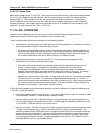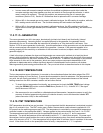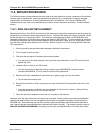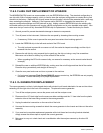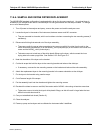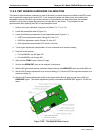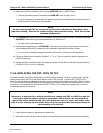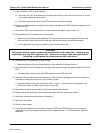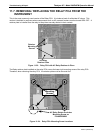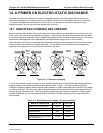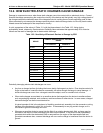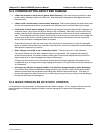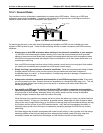
Teledyne API - Model 200EH/EM Operation Manual Troubleshooting & Repair
273
12. If the cold block or TEC is to be changed:
a) Disconnect the TEC driver board from the preamplifier board, remove the cooler fan duct (4 screws
on its side) including the driver board.
b) Disconnect the driver board from the TEC and set the sub-assembly aside.
13. Remove the end plate with the cooling fins (4 screws) and slide out the PMT cold block assembly, which
contains the TEC.
14. Unscrew the TEC from the cooling fins and the cold block and replace it with a new unit.
15. Re-assemble this TEC subassembly in reverse order.
Make sure to use thermal grease between TEC and cooling fins as well as between TEC and cold
block and that the side opening in the cold block will face the reaction cell when assembled.
Evenly tighten the long mounting screws for good thermal conductivity.
CAUTION
The thermo-electric cooler needs to be mounted flat to the heat sink. If there is any
significant gap, the TEC might burn out. Make sure to apply heat sink paste before
mounting it and tighten the screws evenly and cross-wise.
16. Re-insert the TEC subassembly in reverse order.
Make sure that the O-ring is placed properly and the assembly is tightened evenly.
17. Re-insert the PMT/HVPS subassembly in reverse order and don’t forget the gasket between HVPS and
PMT.
Use new plastic screws to mount the PMT assembly on the PMT cold block.
18. Insert the LED and thermistor into the cold block, insert new drying packages and carefully replace the
end plate by making sure that the O-ring is properly in place.
Improperly placed O-rings will cause leaks, which – in turn – cause moisture to condense on the
inside of the cooler and likely cause a short in the HVPS.
19. Reconnect the cables and the reaction cell (evenly tighten these screws).
20. Replace the sensor assembly into the chassis and fasten with four screws and washers.
21. Reconnect all electrical and pneumatic connections.
22. leak check the system.
23. Power up the analyzer.
24. Verify the basic operation of the analyzer using the ETEST and OTEST features or zero and span
gases, then carry out a hardware calibration of the analyzer (Section 11.6.5) followed by a software
calibration.
04521C (DCN5731)



